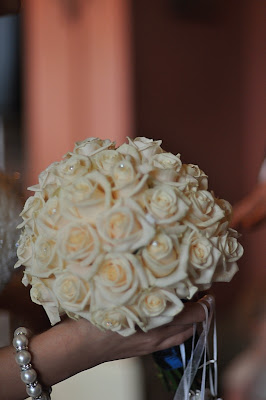
Wednesday 29 February 2012
Sunday 26 February 2012
Friday 24 February 2012
Day 23 - Lilac

Thursday 23 February 2012
Day 22 - Bouvardia

Monday 20 February 2012
Day Fourteen - 'Grand Prix' Rose

They have always been the symbol of undying love & adoration.
Since their introduction to the flower market, with their strong stems, deep ruby red colour & velvety petals have been the market leaders in high-end red roses.
they have a very large head with a high petal count. They are available in stem lengths 50cm - 100cm tall!
Thursday 9 February 2012
Day Thirteen - Muscari
 Otherwise known as Grape Hyacinths, they are often mistaken for Bluebells.
Otherwise known as Grape Hyacinths, they are often mistaken for Bluebells.
They originated in the Mediterranean, Central & Southern Europe, Africa & Asia. They come in varieties of pale blue to very dark blue.
When planted as bulbs they tend to multiply quickly. They prefer well drained sandy soil that is acid to neutral & not too rich. Naturally found in woodlands or meadows, they are commonly cultivated in lawns, borders, rock gardens & containers.
Day Twelve - Narcissus 'Soleil d'or'

These are a very scented variety of Daffodil.
On each stem there are lots of small individual heads.
Day Eleven - Rose 'Blush'

These beauties have a white outer layer & the inside of each petal is a beautiful burnt orange colour.
Day Ten - Molucella
 Commonly known as 'Bells of Ireland', they have apple-green flowers of a bell like appearance.
Commonly known as 'Bells of Ireland', they have apple-green flowers of a bell like appearance.
in the language of love, these represent luck. They are a member of the Mint family.
In Australia & New Zealand they refer to them as Canterbury Bells.
It is often debated as to whether these beauties are a flower or actually a variety of foliage.
They originate from Syria & Eastern Mediterranean Countries. They change their shape depending on where they are in relation to the light.
Wednesday 8 February 2012
Day Nine - Lisianthus

I call it Lisi or Lizzy but it's Latin name is Eustoma.
Their blooms have such a soft, feminine look & they are very long lasting. They are often mistaken for Roses or even Peonies like the double-petalled varieties.
It is pronounced Lizzie-ann-thus.
They are made up of delicate trumpets in shades of white, purple, pink, cream, lilac & bi-colours. They are available all year round.
They are called Lisianthus because this means 'bitter flower' referring to the taste as the flowers were traditionally used in herbal medicine.














